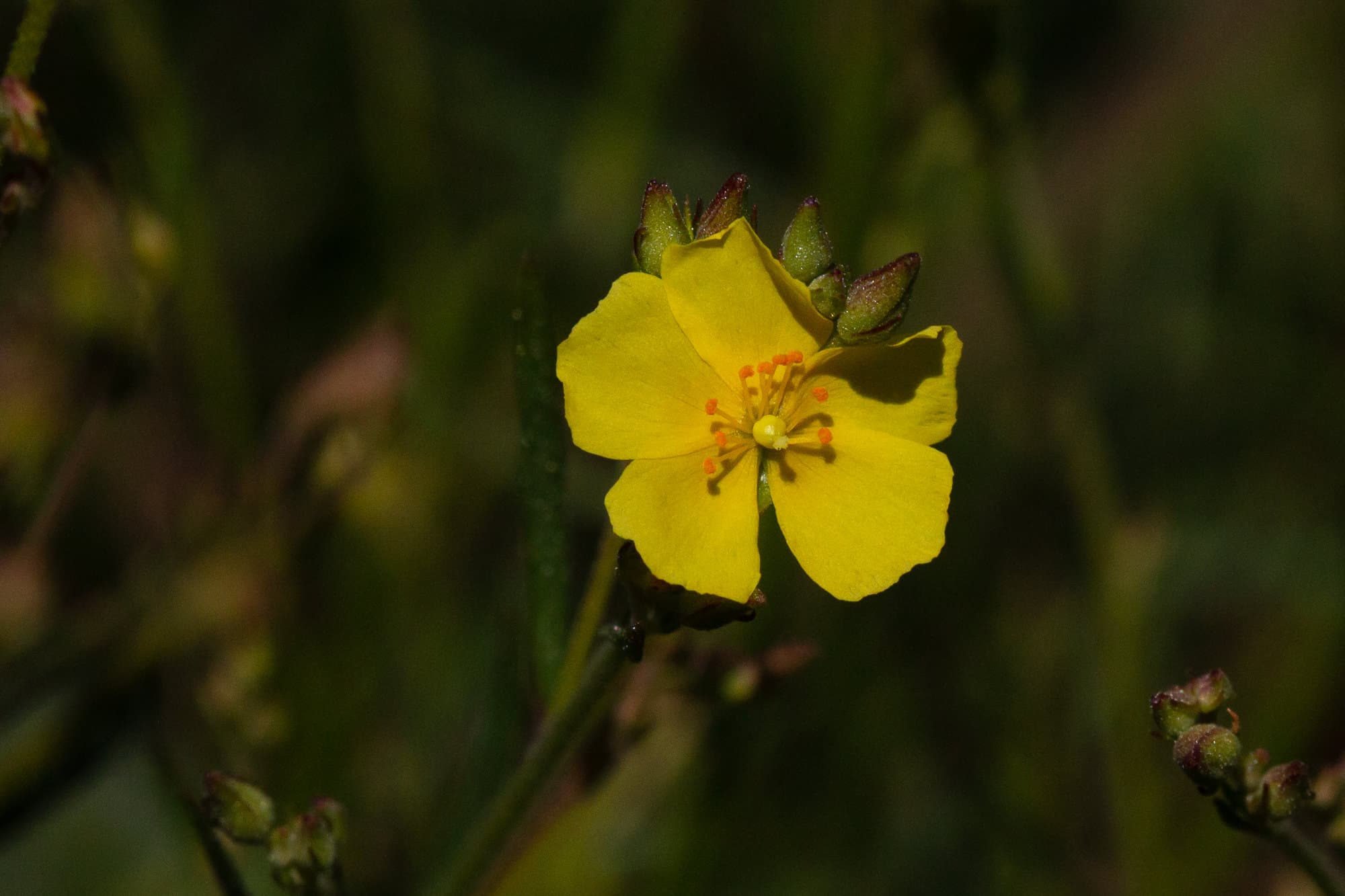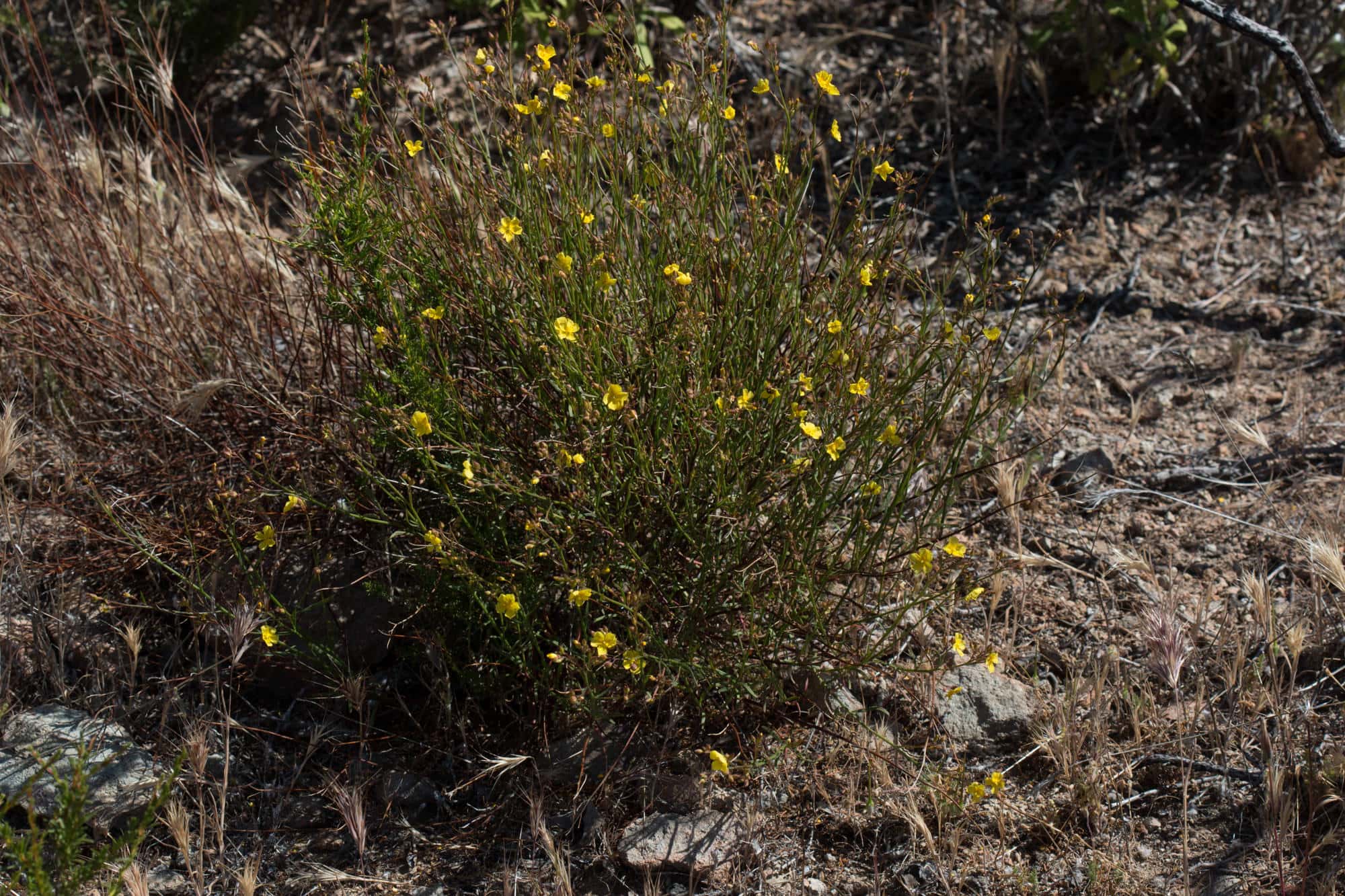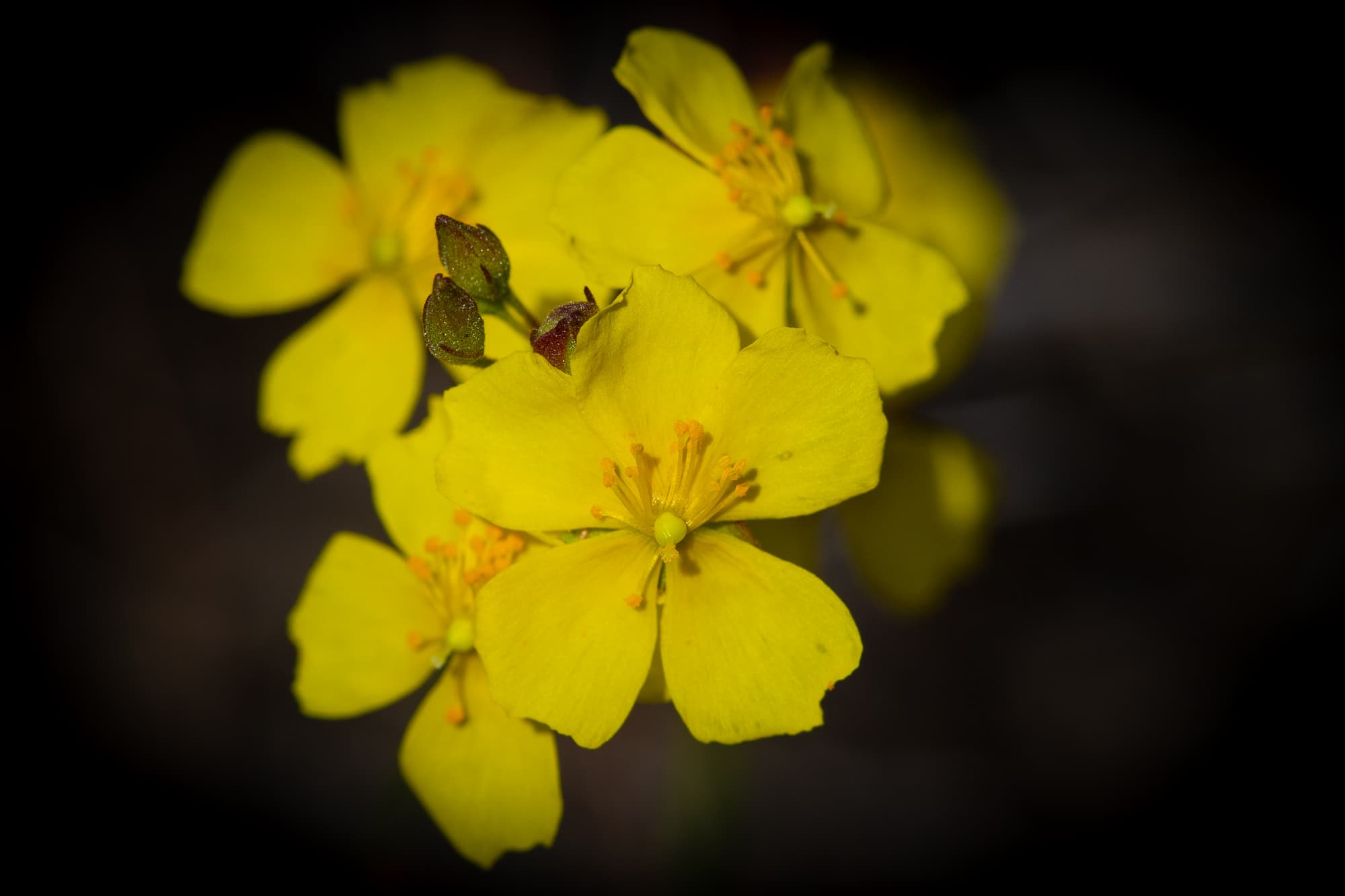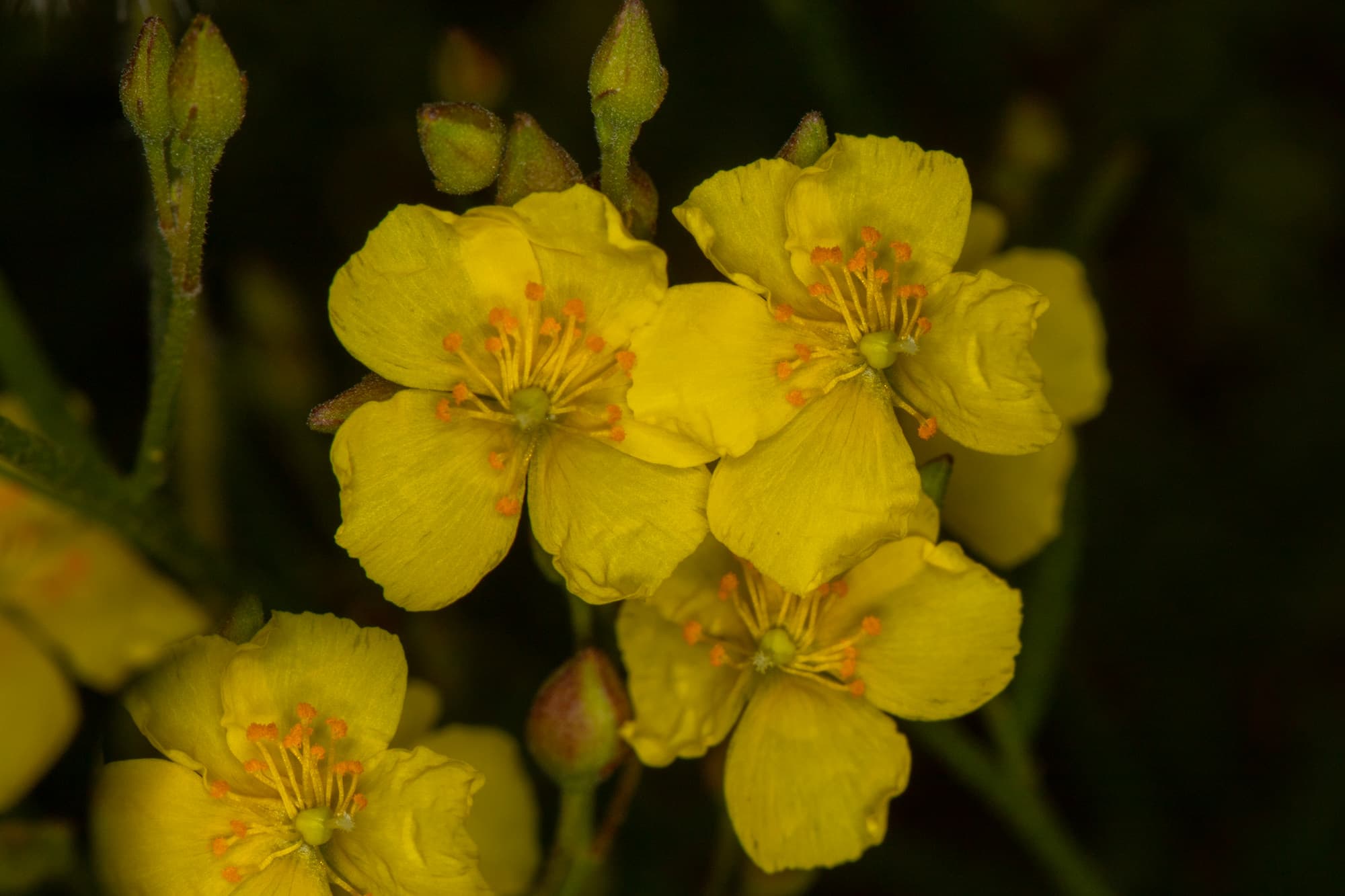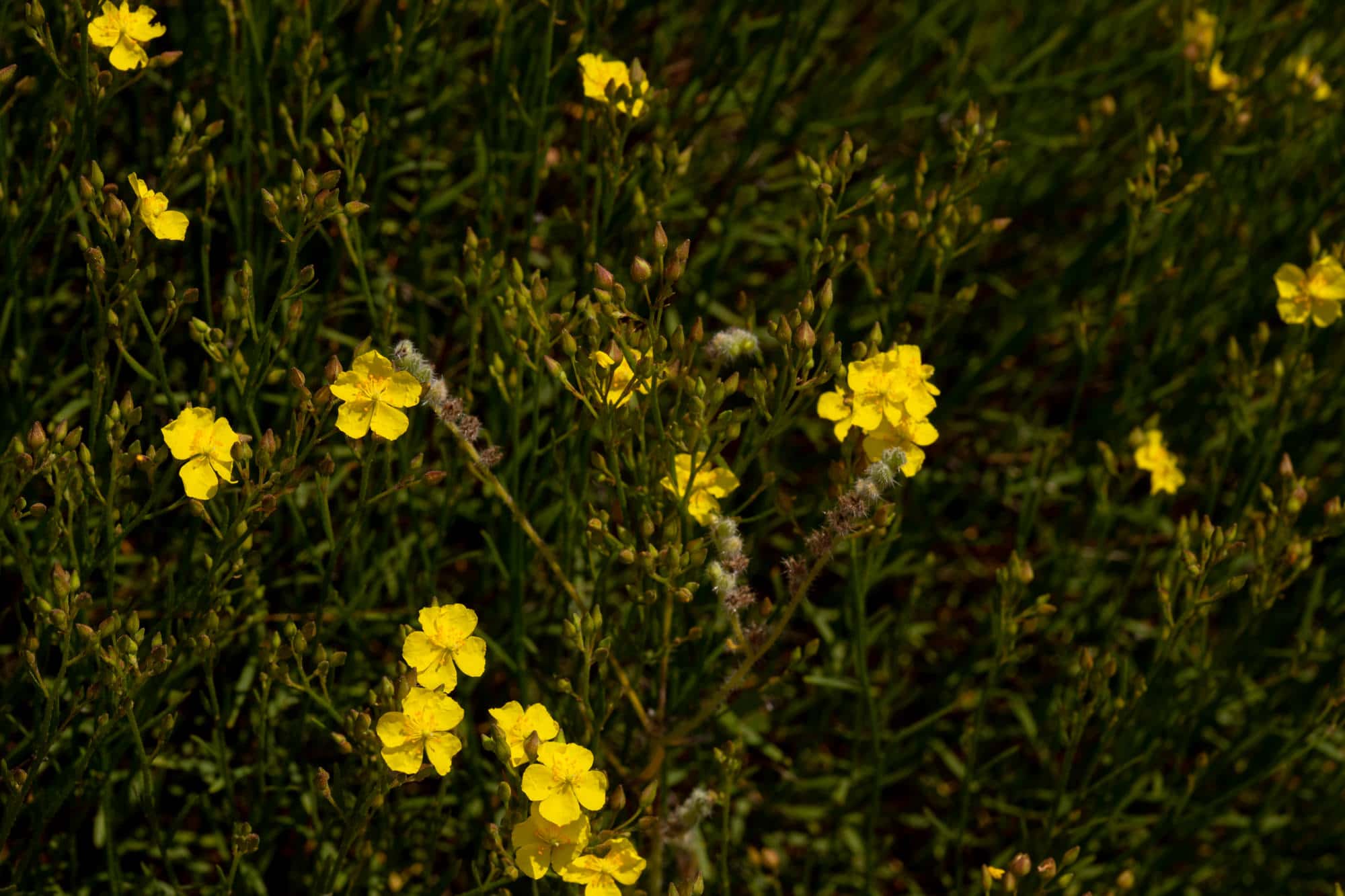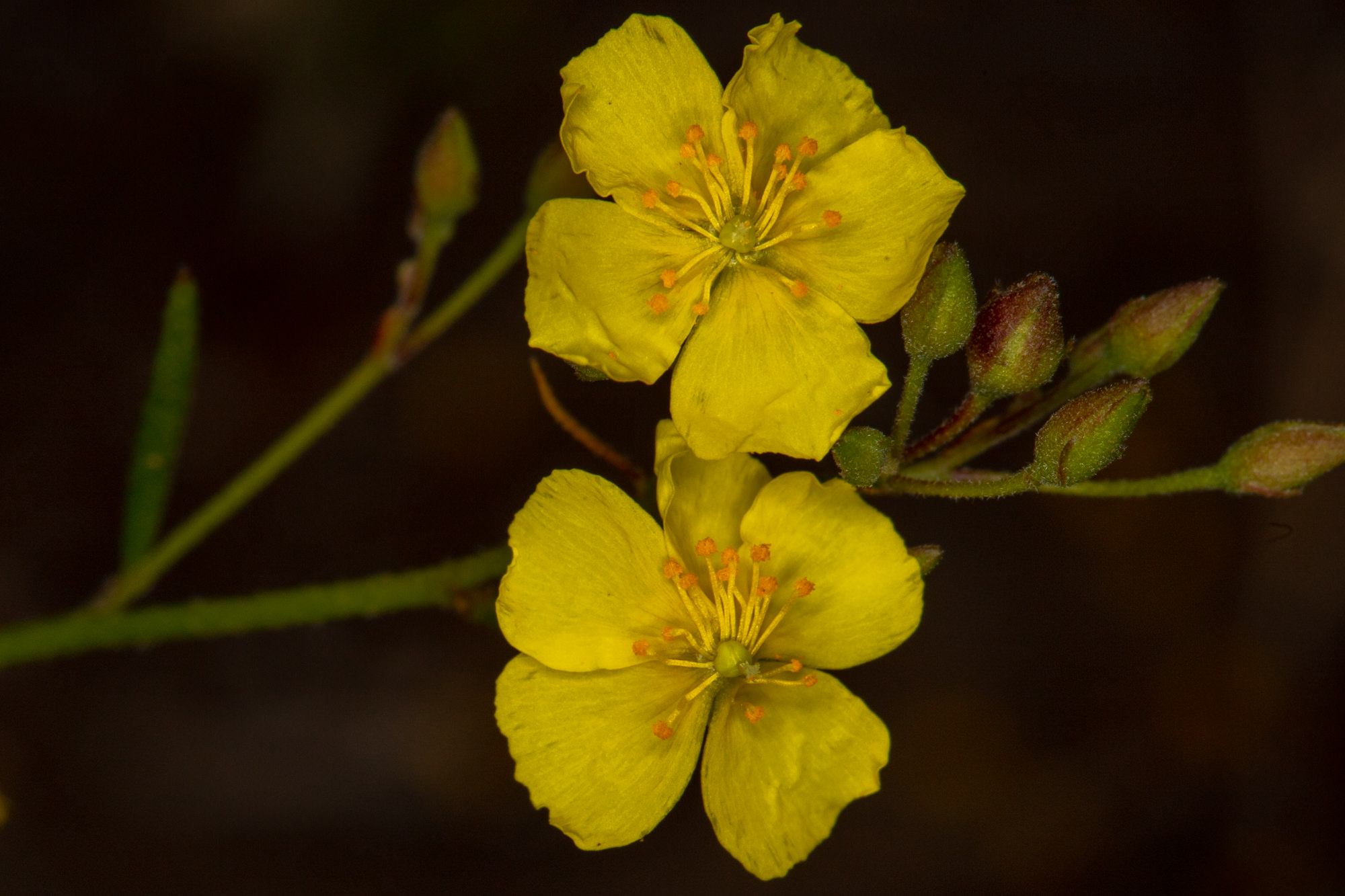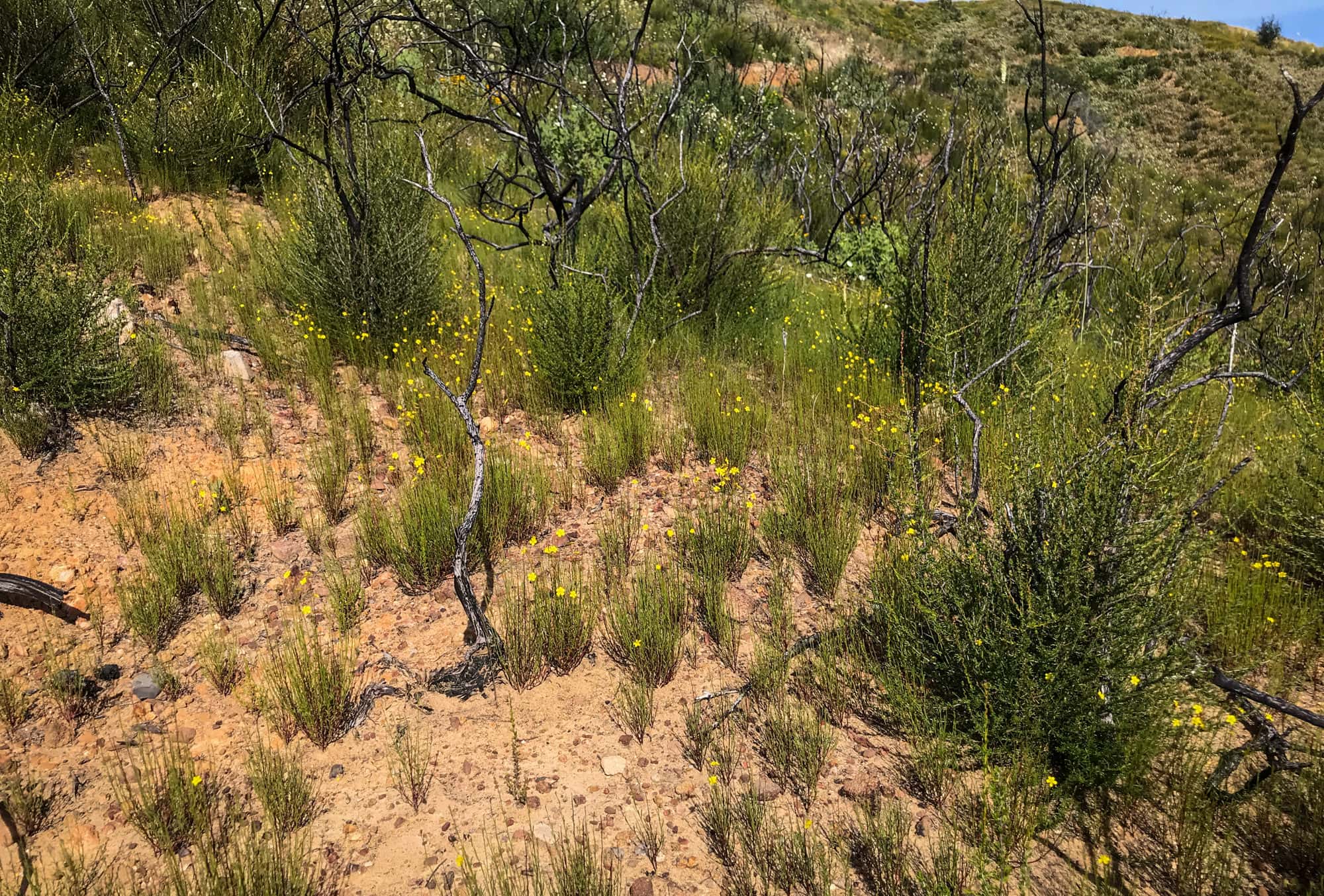Peak Rush Rose
- Crocanthemum scoparium
| Common Name(s): | Peak Rush Rose |
| Scientific Name: | Crocanthemum scoparium |
| Family: | Cistaceae (Rock Rose) |
| Plant Type: | Shrub |
| Size: | up to 18 inches |
| Habitat: | Chaparral and coastal sage scrub |
| Blooms: | March to July |
| Fire Response: | Germinate from Seed |
Peak Rush Rose — Crocanthemum scoparium is a species of rockrose which is Native to California that grows in dry, sandy areas, sandstone and is more prolific in these areas after fires. Easy to confuse with Deerweed, this small perennial shrub has smooth stems and small flowers each with five bright yellow petals. Typical size of the plant — as tall as it is wide — about 18 inches (ca. 46 cm). Peak Rush Rose has been placed with other broom species — stiff green stems with inconspicuous, short-lived leaves, stems are used for photosynthesis. Flowers are bright yellow, delicate and will drop petals and stamens when you draw them near to get a closer look at them.
The first tiny yellow flowers to bloom are near the base and newer flowers are placed higher as the shoot grows - there is a botanical term for that - a raceme. The flowers consist of five sepals, with the outer two generally narrower; petals are yellow. Plants in this family have five-parted flowers and stamens in multiples of five. The overlapping sepals are of unequal sizes and the superior ovary has a short style. This is a plant where a hand lens will required if you want to see the details of the flower. First time I saw this plant was near the summit of Tri Peaks. The plant may look similar to other “brooms” but the flower appeared to my non-educated eyes like tiny roses.
Fire Response: Rock-rose is a “fire-follower”, its seeds can remain dormant for many years and are signaled to sprout by a wildfire. These seeds have a very hard coating that makes them impermeable to water. Germination cannot occur until the coating is broken down by heat. In the years after a fire, seeds are deposited in the soil where they accumulate. The heat of the fire breaks down the seed coat to prepare the long dormant seeds to germinate during subsequent rains. Interestingly, about a quarter of the seeds germinate without fire - could this mean that that some seeds developed thinner coatings or that a certain percentage were designated "next generation"? The Woolsey fire brought this plant back to common status for 2019 and 2020; in a few years it will again become less common. Flowers often appear after the winter rains begin however March to July is the best time to look for them. Enjoy them while you can!
Like other plants that bloom in the Summer, over time a Cost Benefit Analysis of sorts has been done. The best choice for one species may not work for another. Plants that bloom in the late Summer or Early Fall have less competition for pollinators but more limited access to water. There is a cost for limiting transpiration. Water loss from photosynthesis occurs during the exchange of gasses (carbon dioxide and oxygen); less transpiration reduces the amount of conversion to oxygen and organic compounds that feed the plant. Trading faster growth and seed production for drought tolerance and the chance of more successful pollination has worked for the continuation of this species.
Link to Calflora.net - the best source of this fascinating information.
Name Origin: Crocanthemum: from krokos, the saffron plant, and anthemon, "flower." The genus Crocanthemum was published by Édouard Spach in 1836.. scoparia/scoparium/scoparius: broom-like, alluding to the plant structure.
Contributed by George Sherman
Last modified: August 21 2024 15:18:49.
Number of Images: 8
Image Size Total: 1,786,945
References:
Wildflowers of the Santa Monica Mountains, by Milt McAuleyFlowering Plants: The Santa Monica Mountains, Coastal and Chaparral Regions of Southern California, by Nancy Dale
Chumash Ethnobotany: Plant Knowledge Among the Chumash People, by Jan Timbrook
Leaf Shapes Primer - Botanical Terms for Leaves: - Link

